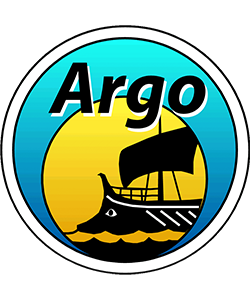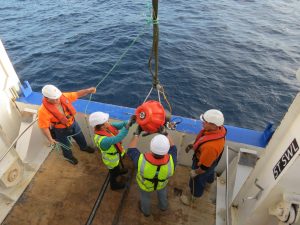What Is Deep Argo?
The scientific community agrees that a systematic sampling of the full ocean depth is needed to close the planetary budgets of heat and freshwater, and the global sea level budget. The strength and variability of the large-scale ocean circulations that extend from the sea surface to the ocean bottom play significant roles in the uptakes and transports of heat and freshwater, and melting of sea ice. Since the implementation of the Argo program, profiling floats were limited to the top half of the sea (0-2000 m) and the accuracy of sensors was similarly limited to upper ocean levels of temperature and salinity variability. A new generation of autonomous floats called Deep Argo will sample the full ocean volume. Deep Argo float models include the Deep SOLO and the Xuanwu capable of reaching 6000 m, and the Deep ARVOR, the Deep NINJA and the HM4000 are designed to sample to 4000 m. Regional Deep Argo arrays in the Southwest Pacific Basin, South Australian Basin, Australian Antarctic Basin, and North Atlantic Ocean are leading the way forward to implement a standing Deep Argo array of 1228 floats. An exciting transition to systematic full-depth global ocean observations is happening.
Technology challenges
One of the challenges facing Deep Argo is that the CTD sensor used on standard Argo floats was not designed to go below 2000 m depth. Therefore, SeaBird has been working to develop a new CTD sensor that will be accurate down to 6000 m. This new CTD, named the SBE-61, has not yet achieved its aspirational goals of (± .001C, ±.002 psu, and ± 3 dbar) but is progressing relative to those goals. To see the Deep Argo float models, click here.
- Preparing a Deep Argo float for deployment from R/V Tangaroa. Photo courtesy of LEARNZ
- Deep Argo float being deployed from R/V Tangaroa off New Zealand. Photo courtesy of LEARNZ
- Deep Argo float in the water just after being deployed. Photo courtesy of LEARNZ.
Pilot arrays
Terms of Reference
Within the Argo program, the Deep Argo Mission Team acts as a scientific committee to provide recommendations and guidance for the progressive development and implementation of a Deep Argo program in the context of the larger global Argo array. The Deep Argo Mission Team will closely liaise with and report to the international Argo Steering Team. The co-chairs of the Deep Argo Mission Team will be members of the International Argo Steering Team.
More specifically, the Deep Argo Mission Team’s terms of reference are to:
- Develop and update the Deep Argo science plan with respect to regional pilot projects and the implementation and evolution of the global design.
- Coordinate implementation, in particular to optimize the various national efforts.
- Interact with other Mission Teams (e.g. “BGC”) to prepare and coordinate the possible implementation of enhancements to Deep Argo observations.
- Elaborate “good practices” with respect to float and sensor preparation, calibration, deployments and associated in situ simultaneous measurements.
- Provide advice regarding new variables in the Deep Argo data stream, in particular based on an evaluation of the degree of readiness of their sensors.
- In close interaction with Argo Data Management Team coordinate and organize the Deep data management.
- Establish and /or strengthen interactions and exchanges with other related observing programs (GO-SHIP, OceanSITES) or groups of experts (DOOS).
- Establish and develop interactions with the operational oceanography community (e.g. GODAE OceanView) and relevant satellite science teams.
Deep Argo Mission Team
| Name | Country | Institution |
| Annie Foppert | Australia | CSIRO |
| Tetjana Ross | Canada | DFO |
| Zhaohui Chen | China | OUC |
| Zenghong Lui | China | SIO |
| Cecile Cabanes | France | IFREMER |
| Damien Desbruyeres | France | IFREMER |
| Virginie Thierry Deep Argo Mission Team co-chair |
France | IFREMER |
| Claire Gourcuff | European Union | Euro-Argo |
| Antonella Gallo | Italy | OGS |
| Giulio Notarstefano | Italy | OGS |
| Shigeki Hosoda | Japan | JAMSTEC |
| Taiyo Kobayashi | Japan | JAMSTEC |
| Phil Sutton | New Zealand | NIWA |
| Kjell Arne | Norway | Institute of Marine Research |
| Alberto Gonzalez Santana | Spain | IEO |
| Brian King | UK | NOC |
| John Gilson | USA | Scripps |
| Pelle Robbins | USA | WHOI |
| Greg Johnson | USA | PMEL |
| Sarah Purkey | USA | Scripps |
| Dean Roemmich | USA | Scripps |
| Nathalie Zilberman Deep Argo Mission Team co-chair |
USA | Scripps |
Links to related papers
Please visit the Deep Argo Mission bibliography page for a list of all papers published using Deep Argo data.




